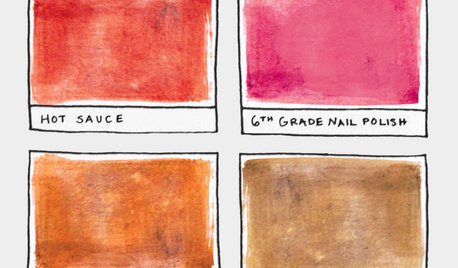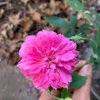Same rose, different names
blazerose
18 years ago
Related Stories

DECORATING GUIDESFor Nursery Decor, What's in a Name?
10 ideas for turning your baby's name into sentimental nursery wall art
Full Story
FUN HOUZZ16 Creative Paint Color Names We Haven't Seen — Yet
Someday, the namers of new paint colors will finally run out of ideas. We're here to help
Full Story
GARDENING GUIDESWhat’s in a Name? See 6 Wildflowers That Aren’t ‘Weeds’ at All
Dispel the stereotypes of weeds and try these wildlife-supporting native wildflowers in your garden
Full Story
LIFECondo, Co-op, Townhouse, TIC — What's the Difference?
Learn the details about housing alternatives so you can make a smart choice when buying a home
Full Story
DECORATING GUIDESStaging vs. Decorating: What's the Difference?
Unlike decorating, staging your home isn't about personal style — it's about creating ambiance and appeal for buyers
Full Story
BEDROOMSCoverlet, Duvet, Quilt, Comforter: What's the Difference?
Learn the basics of great bedding options and how to use them for great comfort and style
Full Story
PLANTING IDEASGreat Garden Combo: Rose + Clematis for Small-Space Impact
We all need somebody to lean on. And when a rose supports a climbing vine, the results can totally transform a small garden
Full Story
WINTER GARDENINGPruning Secrets for Exquisite Roses
Encourage gorgeous blooms year after year with this time-tested advice on how to prune your rosebush in winter for health and shape
Full Story
GARDENING GUIDESWhat Kind of Roses Should You Grow?
Want to add the beauty of roses to your garden? Find out which ones, from old-fashioned to modern, are right for you
Full Story
GARDENING GUIDESGreat Design Plant: Sally Holmes Rose
This simple yet versatile climbing rose grows vigorously all year; plant now for abundant spring and summer blooms
Full Story








cecilia_md7a
blazeroseOriginal Author
Related Professionals
Danbury Landscape Architects & Landscape Designers · Glassmanor Landscape Architects & Landscape Designers · Grand Haven Landscape Architects & Landscape Designers · Finneytown Landscape Architects & Landscape Designers · Frisco Landscape Contractors · Gurnee Landscape Contractors · Holland Landscape Contractors · Medford Landscape Contractors · North Lauderdale Landscape Contractors · Selma Landscape Contractors · Merrifield Landscape Contractors · Holly Hill General Contractors · Mount Laurel General Contractors · Norridge General Contractors · Pacifica General Contractorscecilia_md7a
sueto
RosariumRob